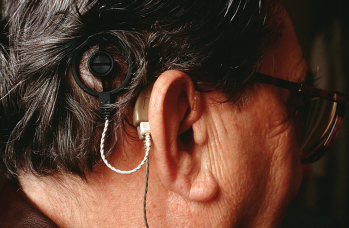 TRIO Best Practice articles are brief, structured reviews designed to provide the busy clinician with a handy outline and reference for day-to-day clinical decision making. The ENTtoday summaries below include the Background and Best Practice sections of the original article. To view the complete Laryngoscope article free of charge, visit Laryngoscope.
TRIO Best Practice articles are brief, structured reviews designed to provide the busy clinician with a handy outline and reference for day-to-day clinical decision making. The ENTtoday summaries below include the Background and Best Practice sections of the original article. To view the complete Laryngoscope article free of charge, visit Laryngoscope.
Explore This Issue
January 2022Background
Hearing loss in patients with vestibular schwannoma (VS), before and after treatment, is known to negatively impact quality of life. A variety of treatment options are available for auditory rehabilitation. Contralateral routing hearing aids and osseointegrated conduction devices can shuttle the auditory stimuli to the contralateral ear after treatment in unilateral vestibular schwannoma patients, but cannot improve sound localization. Auditory brainstem implantation (ABI) is approved by the FDA for patients 12 years and older with neurofibromatosis type 2, and open-set speech after ABI is an exception rather than the rule (Otol Neurotol. 2020;41:1190-1197). Increasingly, cochlear implantation (CI) is being recognized as a feasible option in VS patients. In this Triological Society Best Practice, we review the current evidence to determine if CI is an effective intervention for auditory rehabilitation after VS treatment.

© Phanie / Science Source
Best Practice
Although CI is feasible, only some patients can achieve open-set speech recognition. The presence of cochlear fluid signal on T2-weighted MRI, presence of an intact, functioning cochlear nerve, and positive electrical auditory brainstem response test following tumor resection may assist in predicting CI outcomes. CI outcome data following treatment for VS are highly variable, and there is a paucity of quality of life studies in this group of patients. Objective patient-reported outcome measures and quality of life data are needed to counsel patients and set realistic expectations about CI outcomes in VS patients.